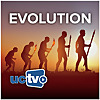
Evolution (Audio)
353 FOLLOWERS
UCTV presents experts exploring the diversity of life on Earth and the evolutionary forces that shape it.
Evolution (Audio)
4M ago
Permanent body modification is a unique and variable practice among humans, not observed in other mammals. Despite being costly and risky, it is regularly performed. Scientific understanding of this phenomenon is nascent, prompting a symposium aiming to assess current research status and prioritize questions for the next decade. The event brings together academics and industry practitioners, exploring historical and contemporary practices like tattooing, piercing, finger amputation, and cranial modification. The symposium aims to investigate the 'when' and 'where' of permanent body modificatio ..read more
Evolution (Audio)
4M ago
In the literature on lip plates in Southern Ethiopia there has been a strong emphasis on their socio-cultural importance and little information about their biocultural significance. Shauna LaTosky proposes that cultural keystone species theory and cultural keystone place theory could provide a useful frameworks for understanding relationships between the agro-pastoralist Mursi of Southern Ethiopia and the plant species and places that are integral to maintaining their cultural bodily practices. Keystone designations are applied here to the indigenous fruit tree lomay (Ximenia americana) and sp ..read more
Evolution (Audio)
4M ago
Across continents, material evidence of body piercing jewelry abounds in the archeological record. However, the varying procedures and processes of piercing, healing, and stretching these wounds for adornment remains unfamiliar to most archeologists. This talk discusses the early self-experimentations that led to the development of the Euro-American body piercing industry. From the late 19th throughout the 20th centuries shared personal correspondence, illustrations, and photographs document the adaptations, innovations, successes, and failures that came to coalesce a current community’s colle ..read more
Evolution (Audio)
4M ago
Archaeological research in Mexico and Central America reveals insights into cultural practices, focusing on the history of body modification. Examining long-term patterns helps unravel motivations for adoption, change, and abandonment of these practices. The talk emphasizes how body modification histories in this region illuminate shared identities across linguistic, ethnic, and political boundaries, while also highlighting distinctions within regional traditions and individual societies. It suggests that indigenous societies viewed the human body as shaped by the community, challenging the no ..read more
Evolution (Audio)
5M ago
This talk offers an overview of the many forms of permanent genital modifications embedded in human cultures, where they occur, the reasons why, the archaeological investigations of origins, and future trends. Included are female clitoridectomy, excision, infibulation, and other practices that affect about five percent of females worldwide; and the male practices that affect one-third of males: circumcision, superincision, and subincision. Why have so many cultures invented and preserved these modifications as part of their valued heritage? Controversies abound: the current human rights opposi ..read more
Evolution (Audio)
5M ago
Bioarchaeological studies of Pleistocene populations, examining practices like tooth ablation, facial piercing, and cranial modification, contribute to our understanding of social identities and population dynamics. Recent analyses of Ohalo II H2 in southwestern Asia and Oldupai Hominid 1 in Tanzania reveal dental evidence of intentional body modifications. Ohalo II H2 likely represents the earliest case of intentional incisor ablation in Southwest Asia, a common practice in Iberomaurusian and Natufian cultures. Oldupai Hominid 1 exhibits dental wear suggestive of facial piercings, a previousl ..read more
Evolution (Audio)
5M ago
Today, permanent body modification (PBM) is very popular. Studies suggest that well over a billion living people have experienced one or more types of PBM. But what is the history of PBM? When did the different types originate? Were they invented recently, or do they have a long history? Did they appear simultaneously or at different times? This presentation examines evidence in non-human animals and extinct hominins, delving into early archaeological and historical records of seven main PBM types: tattooing, scarification, amputation, piercing, genital modification, dental modification, and b ..read more
Evolution (Audio)
5M ago
Permanent body modification is a unique and variable practice among humans, not observed in other mammals. Despite being costly and risky, it is regularly performed. Scientific understanding of this phenomenon is nascent, prompting a symposium aiming to assess current research status and prioritize questions for the next decade. The event brings together academics and industry practitioners, exploring historical and contemporary practices like tattooing, piercing, finger amputation, and cranial modification. The symposium aims to investigate the 'when' and 'where' of permanent body modificatio ..read more
Evolution (Audio)
5M ago
This talk presents a new account of the development of professional tattooing in Britain and America since the late 19th century. Research based exclusively in primary sources reveals that the story of what kickstarted the creation of commercial tattooing, and what sustained it, ultimately becomes intelligible as a small and interconnected network of transnational artists and – crucially – clients. These newly clarified networks problematise both the date and form of the customary notion of a “Tattoo Renaissance” in the 1970s and 80s. Moreover, this research presents a more diverse account of ..read more
Evolution (Audio)
5M ago
This talk explores the 1000-year practice of "footbinding" in ethnically Han Chinese families, involving modifying young girls' feet by wrapping the toes under the sole, often resulting in broken toes. Two main hypotheses—Labor Market and Evolutionary Social Sciences—are considered for explaining the origins, maintenance, and cessation of footbinding. This talk presents evidence from autopsy results, medical examinations, anthropological records, interviews, and historical texts. It argues that evolutionary social and psychological principles related to hypergyny, mate guarding, parental compe ..read more